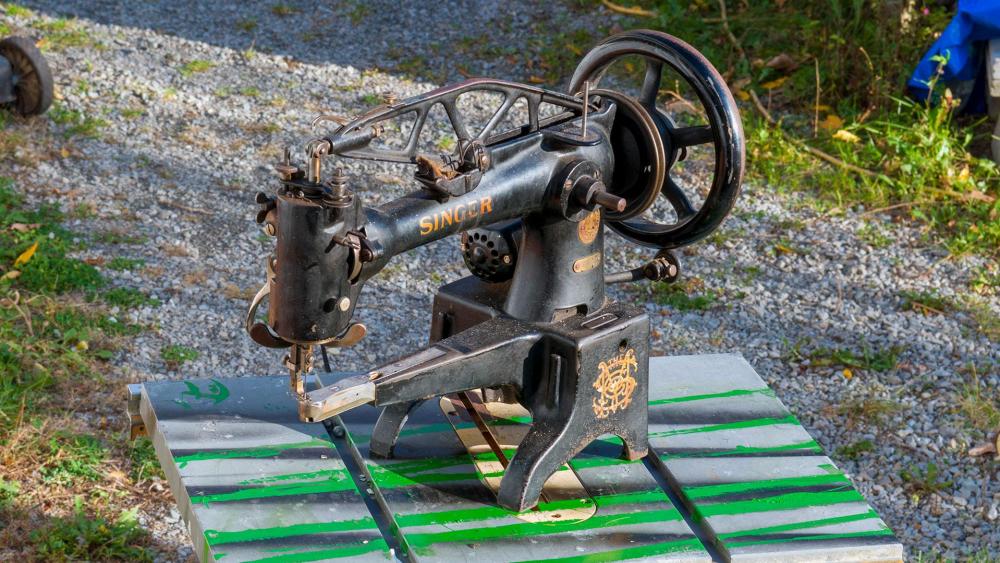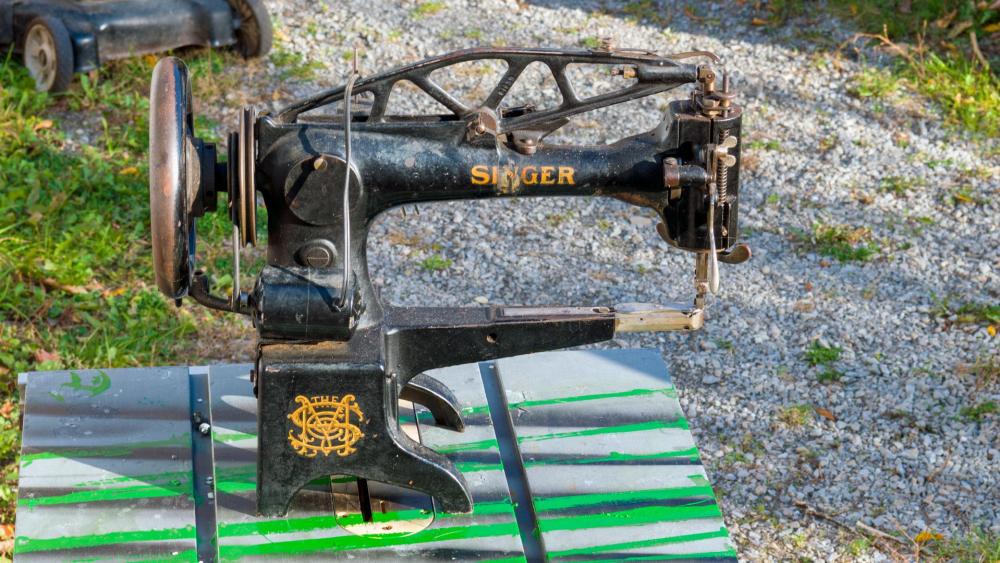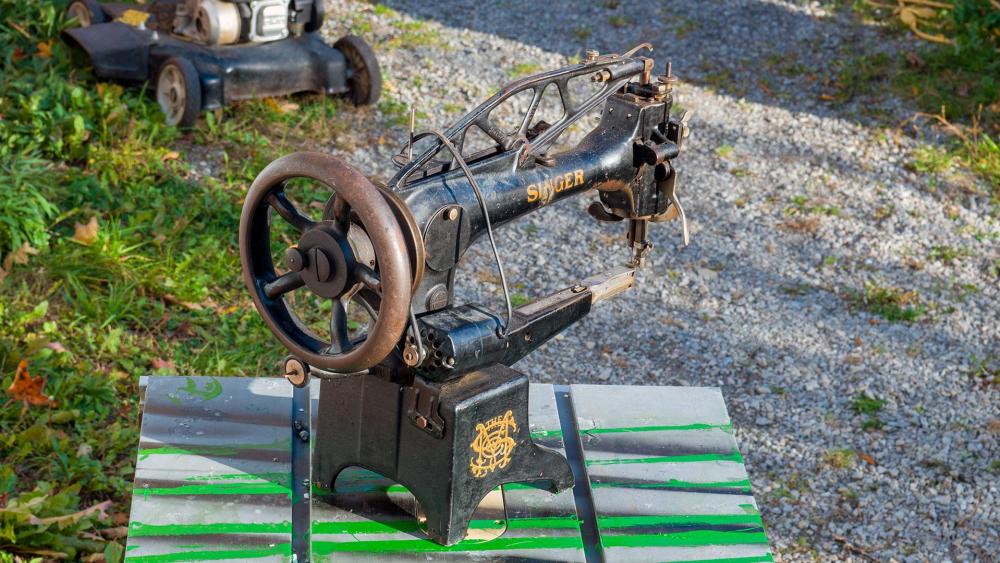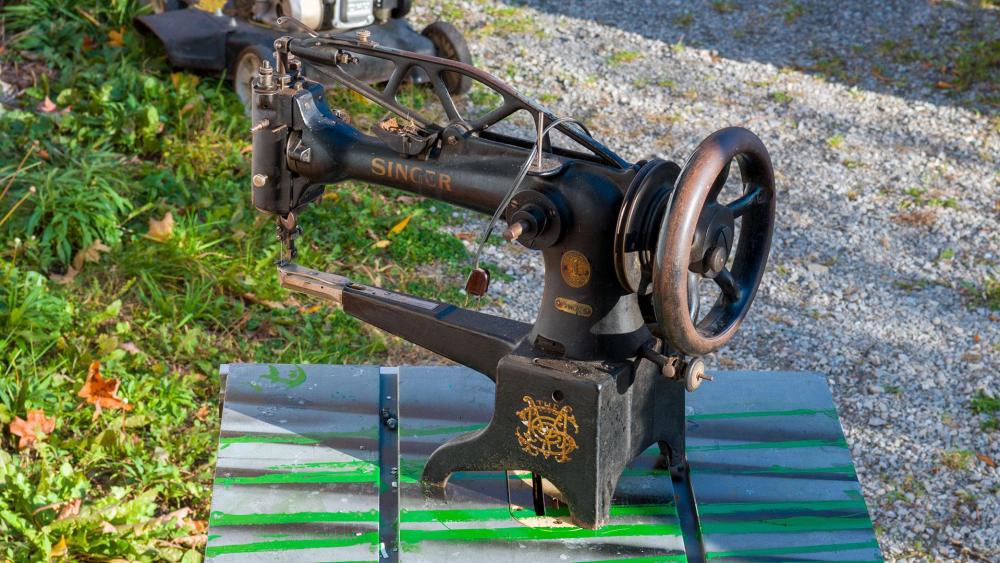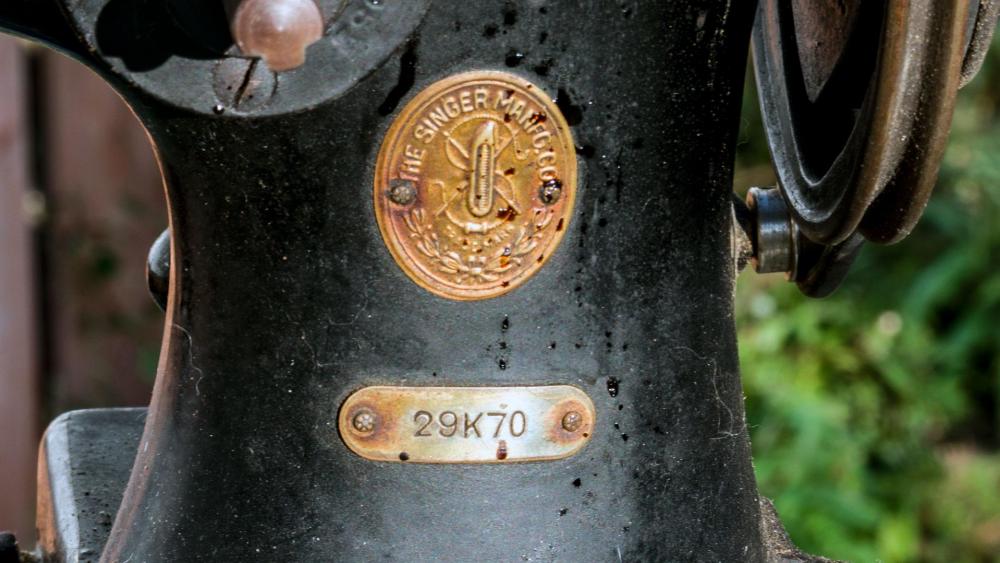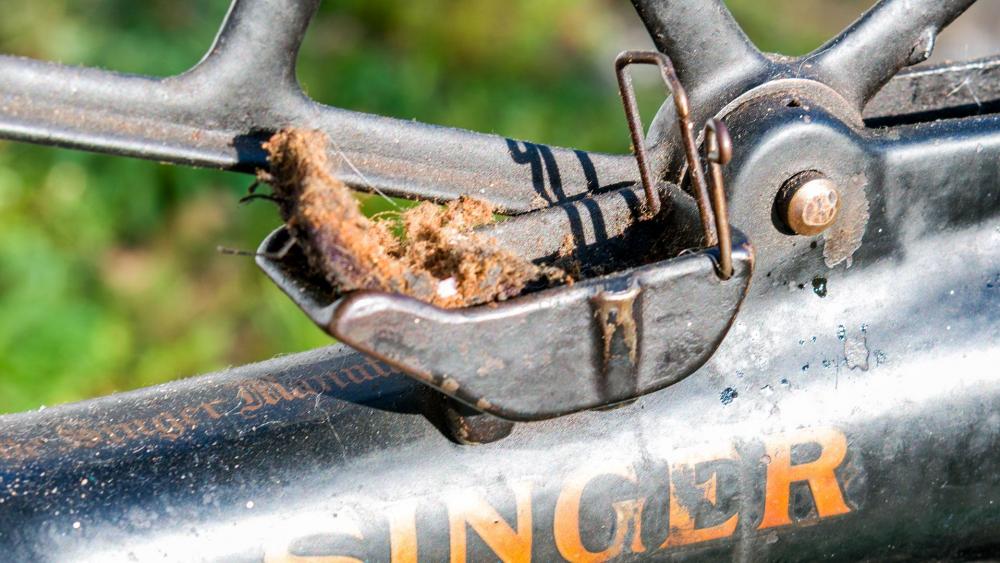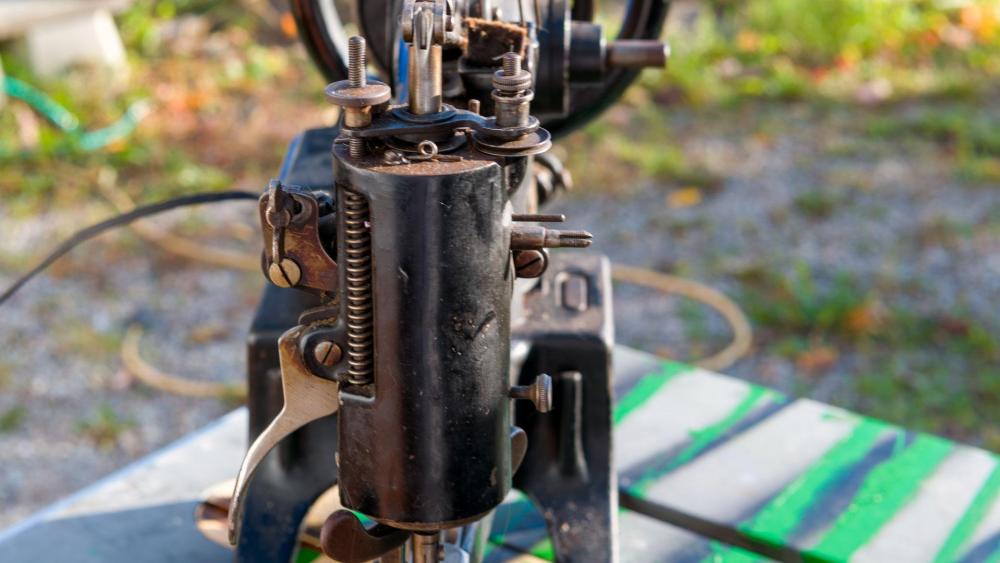
kgg
Contributing Member-
Posts
3,273 -
Joined
-
Last visited
Content Type
Profiles
Forums
Events
Blogs
Gallery
Everything posted by kgg
-
Thank you, I'll go through it later today. kgg
-
Don't cheap out and buy a machine based on price alone. Buy the best machine for what you are planning on sewing and remember no one machine will do everything well. That is why some have more then one machine. There is nothing worst then buying a machine, irregardless of price, that is not capable of doing what you want or are prone to problems. Those machines are soon replaced usually at a dollar loss. If you buy a brand name machine you will pay more up front but if you decide at some point to replace the machine a brand name machine (Juki, Adler, Pfaff, etc) will command more dollars and be easier to sell on the used market. Trying to compare the Cowboy CB341 which is a industrial class 341 / 1341 to the Sailrite Leatherworker which is not an industrial machine is like comparing apples and oranges. If you can only afford one machine buy a industrial class cylinder bed with a flatbed attachment and as time goes on invest in an industrial flatbed machine. kgg
-
Help identifying Consew Cylinder bed machine
kgg replied to CitroenLVR's topic in Leather Sewing Machines
To me it looks like a Consew 287R. kgg -
A couple of questions: 1. What size of thread are you using? 2. What size of needle are you using? The Cobra class 4 is a 441 class machine and this class of machine shines at sewing thick stuff with heavier weight thread up to 7/8" thick. The min thickness this machine is listed at is 6 oz leather (4.5mm) and you are wanting to sew 4mm or 5.5 oz leather so you are just a touch below. There a couple of articles by Wiz on what adjustments you may have to do in order to sew thinner material and RockyAussie has a needle plate designed to help with sewing thinner stuff. I am not saying it won't sew that thin but I think a class 341 like the Juki LS341 / 1341 machines or Cowboy 341 or Techsew 2750 would probably have been a better choice. kgg
-
Try Japan Sewing Machine & Supply Co. (905) 764-0100 in Richmond Hill or Civit Sewing Machines in Lucan (800) 388-3638 / (519) 227-1193. Another option maybe a plate from a clone machine like a Cowboy, Cobra or Techsew machine would work. Really nice machine. kgg
-
Great information, thank you. kgg
-
Keep in mind that no one machine will do everything. The Leatherwork (~$1400 usd) which is a flatbed that is basically a Sailrite LS-1 straight stitch machine put into a short table with a nice 12 coil servo motor. That machine can handle up to a #20 needle so the max size of thread for that size of needle is V92. These portable sewing machines were originally designed as a on board sail cloth repair machine. It probably can sew up to a max thickness of 1/4" of material. They do have there place as all machines do but it would not be my first choice. Since you are planning on sewing bag type items a cylinder arm machine would I think be a better choice in the Juki LS-341 or Juki LS-1341 class with a flatbed attachment. There are many clones in this class so you will have lots to choose from either in the new or used market. Buy Once, Cry Once kgg
-
That spring on closer examination is missing. Another part to replace. Thank you for the link to the manual. I did have that manual. I am having a job to tracking down a manual for Singer 29K70. It seems as though the 29K70 was short lived after replacing the 29k58, 60, 62 series and then replaced by the Singer 29K 71, 72, 73 series machines. Another question I have is normally the top thread is tensioned by the top tensioner but for Darning you would use the darning tensioner on the side. Why, what difference would make and are there any video of a 29K's out there showing it Darning? kgg
-
I am assuming you mean the one at the top of the head just after the top thread tensioner and before the thread goes down the shaft. Seems to be in good shape, with no thread groove worn into it. I cleaned the machine yesterday and nearly got sick to may stomach. I was a fairly heavy smoker at 4 packs a day for many many years but when I hit it with some cleaner/degreaser the nicotine literally run off just about every surface of the machine. The smell will lets say it was a very distinctive odor that every smoker knows only to well. Glad I done the cleanup outside. No, I also thought the same thing but it was an old felt pad soaked in oil. kgg
-
I'll start the cleanup process over the next couple of days while I wait for a couple new parts, new motor with foot controller, top thread tensioner and darning tensioner. I have also never seen a oil pad in the wax pot but have seen 29k's with a helper motor some were geared while others were similar to this one. kgg
-
Personally I have never had a much of a problem with belt slippage on any of my machines and haven't needed to fiddle with the servo motor pulley size. When belt slippage has happened I was asking/hoping it would punch through something that was beyond the machines sewing limits. In those cases the belt slippage was a good thing and prevented possible damage to internal parts. lf I were to consider putting a speed reducer on or changing the servo motor pulley size it would be just to gain lower speed control not for extra punching torque. In the end I guess the Engineers who design the machines have to take into account the stress that can be placed on internal parts and what size of motor / pulley sizes that would best accommodate the majority of users for a particular machine. kgg
-
I came across a 98 percent complete Singer 29K70 for a steal. It was dragged out of a guys basement. According to the serial number it was built in 1944 at Kilbowie, Clydebank, Scotland. The oddity that caught my eye was the little domestic type sewing machine motor that was attached buy a rubber belt to one of the pulleys. The motor works but needles a foot controller or I may just replace it with a new one unless I can find a proper Singer treadle stand. It is in desperate need of a good cleanup, few touch ups on the paint, a good redneck oiling and a few warlock attachment upgrades. The top thread oiling pad is even still in the top wax pot and an old threaded bobbin still in place. There seems to be a couple of small pieces missing or needing replacement but the machine is free moving on the hand wheel, the presser foot and the needle are all moving as they should. My other Singer 29K71 made in 1949 but released in 1951 is a short arm, small bobbin while this one a Singer 29K-71 is also a short arm, small bobbin. Both have the ability to mount the hand-wheel on either the front side or the end. The difference so far appears to be the Singer 29K71 handwheel was cased without the ability to accept the small wooden crank knob for easier hand wheeling. I think it is probably worth saving from the scrape pile. kgg
-
A good example of the belt contact surface would be: i) a 75mm diameter circle would allow a belt to contact with half of the circle at any given time. That means the belt actually contacts 117.81mm of the pulley surface ii) a 50mm diameter circle would allow a belt to contact with half of the circle at any given time. That means the belt actually contacts 78.54mm of the pulley surface iii) a 40mm diameter circle would allow a belt to contact with half of the circle at any given time. That means the belt actually contacts 62.83mm of the pulley surface A 40 mm circle would only have 53.33 percent of the contact surface as a 75mm circle. kgg
-
There are a lot of clones of the Juki 1341 the Kobe LS-1341 and Techsew 2750 to name a couple. That makes access to attachments and replacement parts really available. However the genuine Juki parts are of better quality / consistency and with that comes the premium price. Even simple items like after market bobbins may work, may not but Juki bobbins always work. I use after market items off such sites as Aliexpress or Amazon for binding attachments made for flatbed machines so I can utilize them on all my machines rather then having a dedicated set for just the 1341. This for me is cost effective. Flatbed binders cost less then $15 ea while 90 binders are $100 each. The downside is that you can't get the item being edged as close to the needle as if you were to use a 90 degree binder. It will depend on your pocket book and what you are binding. If I were you I would consider using your Class 4 with the needle plate that RockyAussie developed. Topic ( "A liitle change to make a BIG differance on Cowboy sewing machines" ). It maybe worth looking into and potentially saving the cost of another machine. kgg
- 2 replies
-
- 1341
- pressor feet
-
(and 1 more)
Tagged with:
-
A good reference chart for thread size versus needle size can be found at www.tolindsewmach.com/thread-chart.html compliments of Toledo Industrial Sewing Machines. kgg
- 7 replies
-
- neels saddlery
- tension problem
-
(and 1 more)
Tagged with:
-
The bobbin assembly is similar to other similar machines. The video I am linking to may provide some help even though it was for a one armed bandit, Tippmann Boss, which was having problems. Since you are not the original owner who knows what they done with adjusting the bobbin tensioner and may have over tightened it and flatten it so that it doesn't provide any tension anymore. At about 1:05 into the video is a good place to start: www.youtube.com/watch?v=GwJTdFLhvOQ&t=194s Hope this helps, kgg
- 7 replies
-
- neels saddlery
- tension problem
-
(and 1 more)
Tagged with:
-
The #25 needle is good for T270 in thinner / less sticky / less tough materials so go up one size to give a little extra spacing in the hole for the top thread to be able to pull up the bobbin thread. Since most times you will be reversing to lock a stitch the problem will be even worse if the forward and reverse stitches don't match. A good reference chart for thread size versus needle size can be found at www.tolindsewmach.com/thread-chart.html compliments of Toledo Industrial Sewing Machines. kgg
-
Couple of additional questions: i) What thread size are you using? ii) What size of needle are you using? iii) Are you using the same size thread in the bobbin as you are in the needle? iii) Have done a test of the stitches in forward verses the stitching in reverse? This is done simply by putting a piece of paper (heavier stock or cardboard) under the presser foot as if you were going to sew but without the thread in the needle. Sew as normal for a few of inches and then reverse. This will tell you if the forward and reverse stitch is the same as the needle should fall into the same holes as what was made in the forward direction. It will also tell you that the stitch length you have selected is actually what you are getting. kgg
-
High torque servo motor for heavy duty leather sewing machine
kgg replied to CowBoyOUTLAW's topic in Leather Sewing Machines
A couple of simple formulas: 1) Horsepower measured in HP or Watts where 745.7 watts equals 1 hp 2) Horsepower = Voltage (measure in volts) X Current (measured in amps) 750 watt motor would have a max current draw (not including any inrush on startup) of: i) 3.4 amps at 220 volts ii) 6.8 amps at 110 volts 3) Horsepower = Motor speed in rpm X Torque measure in Nm or lbf-ft / 7127 (metric) or 5252 (imperial). OR i) HP = 0.000140304 x T(Nm)*rpm ii) HP = .000190403 x lbf-ft x rpm kgg -
bad smell are emitted during machining leather
kgg replied to Zack00's topic in 3D Printers and Lasers
Interesting your signature links to Wattsan a Chinese manufacturer of laser and CNC equipment with "An Lee" as a their CNC Specialist. kgg -
How to remove/replace bobbin without removing what I'm sewing
kgg replied to CitroenLVR's topic in How Do I Do That?
Definitely, but sometimes it does happen. kgg -
High torque servo motor for heavy duty leather sewing machine
kgg replied to CowBoyOUTLAW's topic in Leather Sewing Machines
They would have been better to have a done a pre release review like a lot of computer companies do when they are about ready to release new hard drives/ chip sets / coolers / motherboards / etc to qualified reviewer users. kgg -
I liked how they use a block and tackle to help move the sail material forward while sewing. Those are really nice sewing machines and I would guess cost a pretty penny. kgg
-
High torque servo motor for heavy duty leather sewing machine
kgg replied to CowBoyOUTLAW's topic in Leather Sewing Machines
While you are checking with your Engineer please also ask if the motor and or components are CE, UL or CSA approved. kgg


